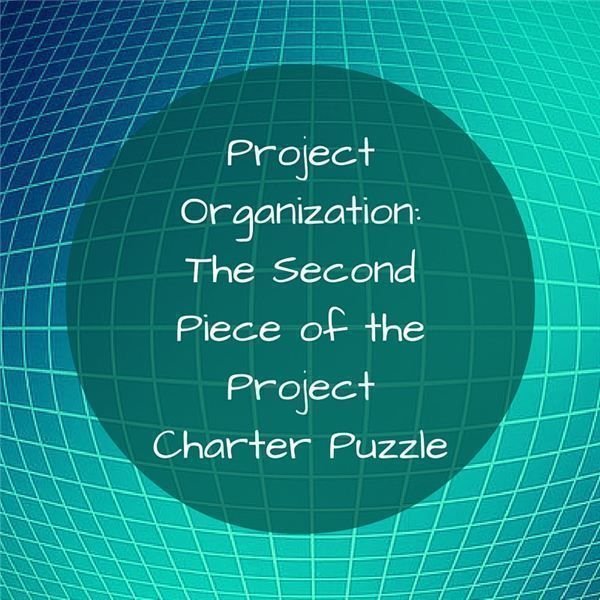How to Create the Project Organization section of your Project Charter

The Project Organization section of the Project Charter focuses on five key things:
- Customers
- Stakeholders
- Roles
- Responsibility
- Structure
The key to doing these effectively is clearly understand what information you need and to organizing your thinking and begin documenting the information clearly. Let’s take a look at each of the components of project organization.
List the Customers
The customers are those people who will directly use the deliverables produced from the project. Customers can be internal – such as customer service representatives - or external to the organization – such as consumers/purchasers of company products.
Your list of customers will be better organized if it captures the customer grouping, such as customer service representatives, and then the specific names of the individual reps that are part of that customer grouping.
The customer service system will at least include the following customers:
- Customer service representatives
- Purchasers
- Department managers
- Returns department personnel
- Sales department
These are all groups of people that will use the system.
One more critical note about customers: project success is (or should be) primarily based on whether the project deliverables satisfy the requirements of the customers.
List the Stakeholders
The stakeholders are those people or entities outside of the project that have a key interest, or stake, in the project. For stakeholders, capture the title or entity, and then document the stakeholder’s interest.
For the customer service system example, here are some examples of stakeholders:
- The company CEO will be interested in aligning the customer service with the company’s vision and strategy.
- The company CIO will be interested in how the system aligns with the range of IT initiatives across the company.
- The CFO will be interested in how the system affects financial performance.
- A regulatory body might be interested in how the customer service system supports compliance with regulations around the product.
List the Project Roles
The project roles are those jobs required to actually do the project. Depending on the project, the range of roles could become complicated, but you can provide clarification by capturing information such as the role, organization, the resource name, assignment status, and assignment date.
For the customer service system, some key roles will include:
- Supervisor of development
- Developers
- Testers
For smaller projects, your listing of roles in the project charter may be sufficient, but on a larger project you will probably need to lay out more detail in the resource plan.
Clarify Levels of Responsibility
In the case of responsibilities, you need to list all of the major responsibilities for each role identified. The larger the project is, the more formal this should be, and it may include a full list of responsibilities, performance criteria, and skills required for each role.
In the case of our customer service system, responsibilities will need to be listed for the larger roles, like project sponsor, project manager, and project reviewers as well as the team members such as supervisor of development, developers, and testers.
The ultimate in clarify levels of responsibility would be to put together a RACI chart – the subject for another post.
Think Through the Project Structure
The project structure is, in short, an organization chart. Use Visio or some other visual way of documenting a view of the relationships among the different roles on the project. You may or may not want to include stakeholders and customers in your visual depiction.
Conclusion
Pull together information on customers, stakeholders, roles, responsibility, and structure and you will perform a great service toward successful implementation of the project.
This post is part of the series: How to “Wow” Your Clients with the Project Charter
The Project Charter is a foundational document for managing your project, and on small projects you can add tremendous value and even astound and impress your colleagues with a high impact Project Charter alone.